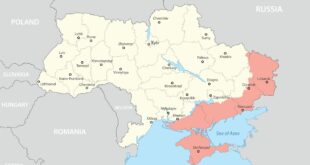As the war in Ukraine enters its second year with no visible end in sight, the established trade/logistic routes connecting China with Europe via Russia (Northern Corridor) are being gradually replaced with the new alternatives. The Trans-Caspian East-West Corridor, also known as the Middle Corridor, is a strategically important transportation route that spans across a vast Eurasian region connecting China with Europe via Kazakhstan, Azerbaijan, Georgia and Türkiye.
The Middle Corridor encompasses both rail and road routes, with key maritime ports on the Caspian Sea serving as pivotal hubs. The Baku International Sea Trade Port in Azerbaijan, Aktau/Kuryk ports in Kazakhstan and, although as yet with less significance, the Turkmenbashi port in Turkmenistan play a significant role in facilitating the movement of goods along this corridor. These ports provide crucial access to the Caspian Sea serving as a vital transportation route that connects Central Asia and Europe.
These ports provide multimodal transport capabilities, which allow for the seamless movement of goods across different modes of transportation, such as rail, road, and sea. This, in turn, makes a cost-effective and efficient route for trade, particularly for landlocked countries in the region that rely heavily on transportation networks for international trade.
Another advantage of the Middle Corridor in comparison to the Northern Corridor is the fact that it is 2,000 kilometers shorter. Also, the Middle Corridor benefits from favorable climate conditions and shortens travel time by 15 days when compared to sea routes. This fact is of crucial importance due to the fact that about 96 % of China’s container trade with Europe went via sea routes.
The integral part of the Middle Corridor is the Southern Gas Corridor – a significant energy project. It connects gas fields in Azerbaijan via a pipeline which connects Azerbaijan’s vast natural gas fields on the Caspian Sea with the EU via Georgia, Türkiye, and eventually reaching Italy via the Mediterranean. The increasing importance of Azerbaijan as one of the major gas suppliers to the EU was highlighted last July when the European Commission President Ursula von der Leyen during her visit to Baku signed a memorandum of Understanding (MoU) on the strategic partnership in the field of energy with Azerbaijan’s President Ilham Aliyev.
Another example of the rapid shift of the trade routes from the Northern to the Middle Corridor is the Baku Declaration and roadmaps for the simultaneous elimination of bottlenecks and the development for 2022-2027, signed by the foreign and transportation ministers of Kazakhstan, Azerbaijan, Georgia and Türkiye in November 2022 which contains measures for the development of TITR (Trans-Caspian International Trade Route) as integral part of the Middle Corridor.
As nothing in this world is outside of politics, or, to be more precise – geopolitics, all of the above does not bode well for Russia and its fellow sanctioned state Iran. The Middle Corridor, with its geopolitical and geo-economics significance, is gaining attention due to its strategic advantage of bypassing Russia. Western countries and China alike view this as a favorable aspect , albeit for different reasons , given the current circumstances. Despite the close relations between China and Russia, Beijing will not be shy to seek alternative connections through the overland Silk Road to Europe to bypass the increasingly toxic Russia. After all, at stake a 626 billion euros export volume to the EU. If in the past Russia took the lead in security matters while China focused on economic issues in Central Asia, following a tacit division of labor, the ongoing Russia-Ukraine war is rapidly changing that equation.
The Middle Corridor’s main appeal is that it crosses neither Russia nor Iran. That fact alone makes it the only available alternative for both the West and China. Moreover, as the sheer volume of sanctions is increasing and direct economic ties between Russia and the West are being severed, the Middle Corridor is becoming more and more attractive for Russia itself to channel its trade to the outside world.
Yet another major factor affecting the geopolitical mix of the region is the emerging role of the relatively new union – the Organization of the Turkic States (OTS). With the exception of Georgia all states connecting China with Europe via Middle Corridor are Turkic states with Türkiye being the heavyweight member. The OTS has adopted the common policy regarding the issue and has been very busy implementing practical steps to increase its overall effectiveness in very near terms.
In conclusion, although it will be unrealistic to suggest that the Middle Corridor will completely replace the its Northern alternative, the rapidly changing geopolitical, economic and security structure established after the WWII in the world in general and in the Eurasian region in particular makes it possible to predict the ever increasing role of the Middle Corridor in the global trade.
 Geostrategic Media Political Commentary, Analysis, Security, Defense
Geostrategic Media Political Commentary, Analysis, Security, Defense





